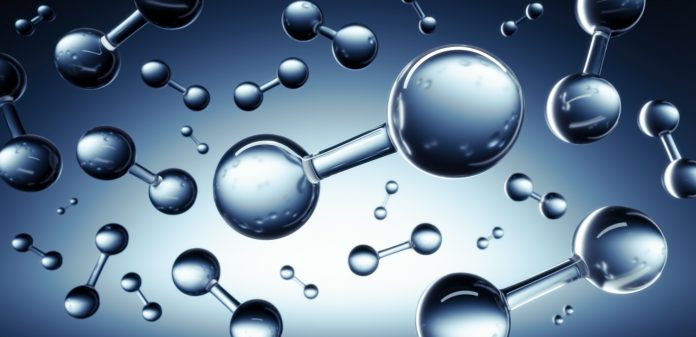By isolating a microbial enzyme and attaching it to an electrode, researchers have achieved efficient one-way conversion of CO2 into formate and, therefore, discovering a new form of CO2 capture
Scientists from the Max Planck Institute for Marine Microbiology and researchers from the Universities of Geneva and Radboud have discovered a highly efficient enzyme in certain microbes that can capture and convert carbon dioxide (CO2) into formate when placed on an electrode.
This breakthrough could inspire new methods for combating CO2 emissions and has been published in the journal Angewandte Chemie.
Microorganisms with high CO2 capture efficiency
Some enzymes uniquely capture CO2 by turning it into formate, a stable and safe compound for energy storage or synthesising various industrial or pharmaceutical molecules.
Researchers Julia Kurth and Cornelia Welte at Radboud University studied Methermicoccus shengliensis, a microbe found in an oilfield and thriving at 50°C. At the Max Planck Institute for Marine Microbiology, Olivier Lemaire, Mélissa Belhamri, and Tristan Wagner examined this microbe to identify its CO2-capturing enzyme and measure its speed and efficiency in converting CO2.
A CO2-converting enzyme with great potential
The Max Planck scientists embarked on the difficult mission of isolating the microbial enzyme. “Since we knew that such enzymes are sensitive to oxygen, we had to work inside an anaerobic tent devoid of ambient air to separate it from the other proteins — quite complicated, but we succeeded,” says Olivier Lemaire.
After isolation, the scientists examined the enzyme’s characteristics. They demonstrated its efficient conversion of CO2 into formate but found that it performs the reverse reaction at a significantly slower pace with a lower yield.
“Similar enzymes belonging to the family of formate dehydrogenase are well known to operate in both directions, but we showed that the enzyme from Methermicoccus shengliensis is nearly unidirectional and could not efficiently convert the formate back into CO2,” reports Mélissa Belhamri.
“We were quite thrilled by this phenomenon, occurring only in the absence of oxygen,” she adds. “Since the formate generated from CO2-fixation cannot be transformed back and therefore accumulates, such a system would be a highly interesting candidate for CO2-capture, especially if we could branch it on an electrode,”
Tristan Wagner highlights an important advantage, when the enzyme is attached to an electrode, the energy needed to capture CO2 is directly provided by the electrode, eliminating the loss of electric current and the requirement for costly or hazardous chemical intermediaries.
As a result, electrodes with the enzyme are efficient and appealing for gas conversion processes. Consequently, the purified enzyme was forwarded to the University of Geneva to establish a CO2-capture system based on electrodes.
Gas conversion using electricity.
Selmihan Sahin and Ross Milton at the University of Geneva specialise in electrochemistry, using electrically connected electrodes to drive chemical reactions. Typically, generating formate from CO2 using electrodes involves polluting rare metals.
They attempted to replace these metals with an enzyme extracted by Tristan Wagner’s team at the MPIMM. While the enzyme binding process on an electrode is not always highly efficient, Wagner’s group’s enzyme has specific attributes that make it more suitable. The Swiss scientists successfully attached the enzyme to a graphite electrode, where it efficiently converted gas.
The conversion rates were similar to those achieved with conventional formate dehydrogenase.
“The strength of this biological system coupled to the electrode lies in its efficiency in transferring the electrons from the electricity towards CO2 transformation,”
Sahin and Milton also found that the system doesn’t perform well in the reverse reaction, as seen in the reaction tube. As a result, the altered electrode consistently converted the greenhouse gas into formate without any noticeable side products or electric current loss.
Heading Towards a Fresh Approach to Utilise Atmospheric CO2
This collaborative effort offers a valuable tool to the scientific community: an enzyme that efficiently converts CO2 using electricity. Using renewable energy sources like wind or solar power to supply electricity to the electrode-based system can transform CO2 into formate—a molecule suitable for various applications or energy storage.
“Before us, no one ever tried to study an enzyme from such a methanogen for an electrode-based gas conversion,” says Tristan Wagner. “Yet, methanogens are natural outstanding gas converters.”
Enzymes have great potential for large-scale processes, but setting up such production systems is a substantial investment. Therefore, even though this strategy could greatly enhance CO2 transformation, it’s essential to fully understand the enzyme’s mechanism before applying it. The research team will now delve into the molecular details of the reaction.











